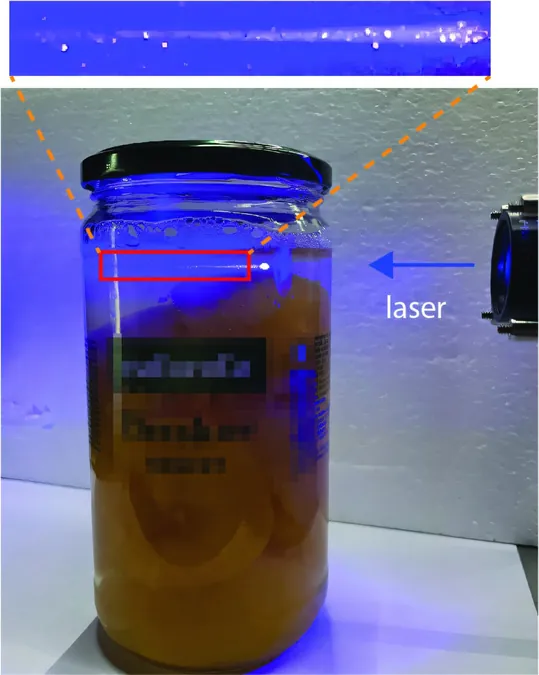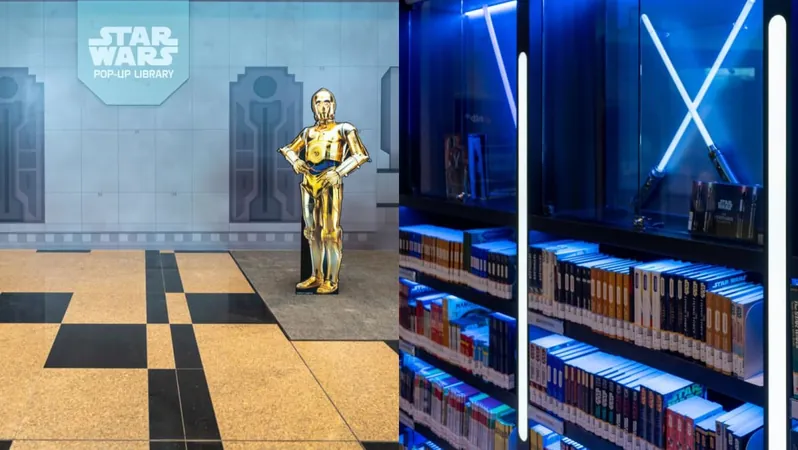
Revolutionary Edible Microlasers: The Future of Food and Beyond!
2025-07-02
Author: Ming
Imagine biting into your favorite dish and unknowingly consuming a tiny laser! Yes, you heard that right. Researchers have created groundbreaking edible microlasers using only food-safe materials—turning our beloved olive oil into a high-tech tool for the food industry.
These innovative microlasers are crafted from droplets of conjunctions like oil or water-glycerol mixtures, infused with natural optical substances such as chlorophyll, the green pigment found in plants, and riboflavin, also known as vitamin B2. Remarkably, olive oil is already packed with enough chlorophyll to act as a laser without any extra ingredients. When stimulated by external light, like a pulsed laser, these droplets emit light in a mesmerizing display.
Published in the journal Advanced Optical Materials, the research reveals that these microlasers can function in various configurations, including whispering gallery modes, where light bounces inside the droplet, and Fabry–Pérot cavities, where light ricochets between two surfaces. By adjusting the size of the cavity or the environmental conditions, the emission properties can be finely tuned.
What makes edible microlasers even more remarkable is their application potential. Acting as ultra-sensitive optical barcodes and biosensors, they can encode vital information, like expiration dates, directly into food. For instance, researchers successfully embedded a microlaser barcode within peach compote, which remained stable and readable for over a year! Additionally, these lasers can detect changes in pH, temperature, and even microbial growth, ensuring your food is always fresh.
And don't worry about adding extra calories; these microlasers won't alter the nutritional value or flavor of your food—making them perfect for vegetarians and health-conscious diners alike. This fusion of cutting-edge photonics and food science could dramatically reduce food waste, enhance quality control, and combat counterfeits in our food supply.
But the magic doesn’t end with food! This edible laser technology has the potential for exciting applications across various industries, including pharmaceuticals, cosmetics, and agriculture, wherever ingestible barcodes and sensors could make a difference.
This innovative research is led by a team of visionary physicists at the Jožef Stefan Institute in Slovenia, including dynamic young researcher Abdur Rehman Anwar and experienced postdoctoral researcher Dr. Maruša Mur. With such bright minds at the helm, the future of edible technology looks dazzling!


 Brasil (PT)
Brasil (PT)
 Canada (EN)
Canada (EN)
 Chile (ES)
Chile (ES)
 Česko (CS)
Česko (CS)
 대한민국 (KO)
대한민국 (KO)
 España (ES)
España (ES)
 France (FR)
France (FR)
 Hong Kong (EN)
Hong Kong (EN)
 Italia (IT)
Italia (IT)
 日本 (JA)
日本 (JA)
 Magyarország (HU)
Magyarország (HU)
 Norge (NO)
Norge (NO)
 Polska (PL)
Polska (PL)
 Schweiz (DE)
Schweiz (DE)
 Singapore (EN)
Singapore (EN)
 Sverige (SV)
Sverige (SV)
 Suomi (FI)
Suomi (FI)
 Türkiye (TR)
Türkiye (TR)
 الإمارات العربية المتحدة (AR)
الإمارات العربية المتحدة (AR)